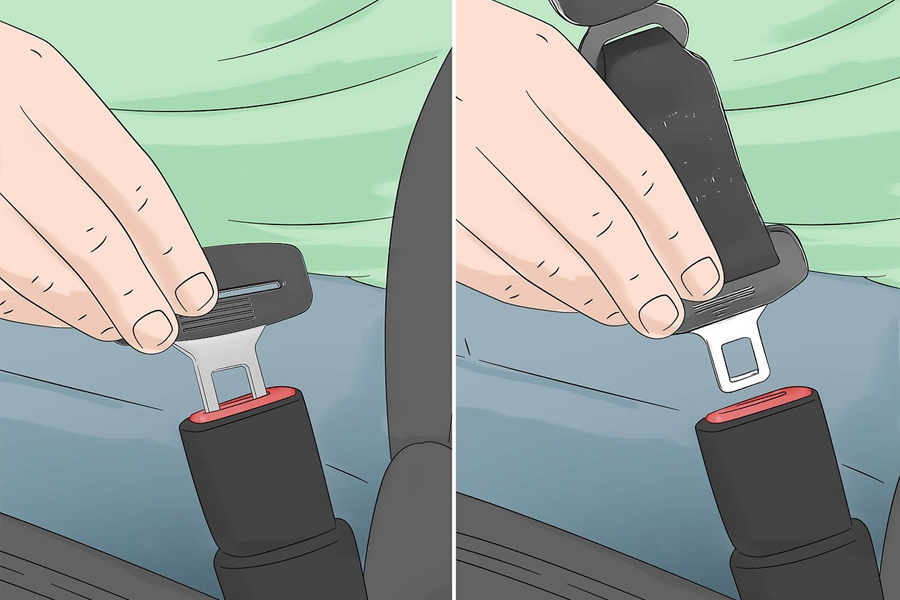Now Reading: What to Know Before Disabling Your Seatbelt Warning Chime
-
01
What to Know Before Disabling Your Seatbelt Warning Chime
What to Know Before Disabling Your Seatbelt Warning Chime

Purpose of the Warning Chime
That little trill or buzz your car makes when someone hasn’t clicked in? It’s not an annoyance engineered by designers who hate quiet drives — it’s a deliberate nudge toward safety. The warning chime exists to increase seatbelt use by creating a small, unavoidable interruption that prompts action. In the quiet, cinematic moment just before you pull away, the chime’s job is to remind everyone in the vehicle that the simplest, most effective protection in a crash is already within arm’s reach.
When the Chime Activates
Most vehicles trigger the chime when the car senses motion or when weight sensors and buckle switches detect an occupied seat without a latched belt. Newer cars layer in sophistication — pressure or occupancy sensors, seat-to-belt logic, and driver-detection systems mean the chime can be smart about which seat is at issue. False alarms are common when heavy objects sit on the passenger cushion or when a sensor is overly sensitive, which is often why drivers end up hunting for a way to silence it.
Why People Consider Disabling It
People want silence for a handful of reasonable reasons: a stubborn sensor that trips too easily, frequent short drives on private property, or simply the irritation of a chime that won’t stop when there’s no passenger. Beyond convenience, some seek permanent fixes because temporary workarounds haven’t stuck. But beneath those motivations is a trade-off: convenience versus a persistent safety reminder that, statistically speaking, reduces injury and fatalities.
Methods for Silencing the Seatbelt Chime
There are broadly three approaches people talk about: mechanical tricks, aftermarket clips, and software or diagnostic tweaks. Mechanical resets — like buckling and unbuckling to realign a sticky sensor — are the lowest-risk first move. Aftermarket “silencer” clips or inserts can trick the buckle into thinking it’s latched; they’re popular because they’re cheap and reversible, but they remove the convenience of a ready-to-use belt. Software-based changes involve the vehicle’s onboard settings or a diagnostic tool to adjust alarm behavior — this is more technical and often best left to technicians who understand the vehicle’s broader systems. In every case, the decision should consider safety, legality, and whether the change will interfere with other interconnected systems.
Safety Implications and Airbag Interactions
Disabling the chime itself isn’t the same as tampering with airbags, yet the two systems are related in purpose. Airbags are designed to work in tandem with seatbelts; remove the reminder and you increase the chance someone will ride unbuckled, which reduces the protective effect of airbags. The chime’s absence doesn’t alter airbag deployment logic, but behavior changes in occupants can make crashes far more dangerous. Think of the chime as a behavioral safety layer rather than a mechanical one — remove the layer and the risk profile shifts.
Legal and Insurance Considerations
Laws vary by jurisdiction, and while many regions don’t have statutes that explicitly forbid silencing a chime, they do mandate seatbelt use. In the aftermath of an accident, an insurer or a court could view a deliberately disabled safety reminder unfavorably if lack of restraint contributed to injuries. That potential legal ripple effect is worth factoring into any decision about permanent modifications.
Common Mistakes to Avoid
The biggest mistakes are structural: fiddling with the belt itself, cutting wires, or making crude alterations that damage connectors or sensors. Those actions can void warranties, interfere with airbag readiness, or create electrical faults that are expensive and dangerous. Another common error is treating a diagnostic fix as a permanent solution without understanding how it might affect other vehicle systems or future diagnostic work.
When to Consult a Professional
If the chime seems tied to an electrical fault, persistent sensor issues, or if you’re considering software-level changes, a qualified technician is the safer route. Service centers have the diagnostic tools and experience to identify whether the problem is a defective sensor, a wiring issue, or a configuration that can be safely adjusted. Letting a pro handle it reduces the risk of unintended consequences and preserves the integrity of the vehicle’s safety architecture.
Temporary Silencing Options
For short-term needs, temporary options exist: buckling a belt extender when appropriate, using a purpose-made clip to quiet an empty-seat alarm, or relocating cargo so it doesn’t sit on a passenger seat sensor. These approaches offer peace for a single drive while keeping the original system intact for regular use.
Re-enabling the Chime
Reversing a temporary silence is usually straightforward: remove the clip, return any software settings to factory defaults, or have a technician re-enable alerts after diagnostic adjustments. Ensuring the system functions as intended after reactivation is important — a quick check at a service center can confirm that sensors and alerts are back online.
Maintaining Vehicle Safety Features
Modern cars are ecosystems of interdependent systems. Regular maintenance, reading the owner’s manual, and paying attention to warning lights will help keep everything — seatbelts, airbags, sensors — operating together as designed. When in doubt, choose the option that preserves the reminder system rather than replaces it.
FAQ
Is it illegal to disable the seatbelt chime?
Legality varies by location; many places don’t ban silencing the chime itself but do require seatbelt use by law.
Will disabling the chime stop airbags from working?
No — disabling the chime typically does not change airbag deployment logic, but it can increase risk if occupants stop wearing belts.
Are seatbelt silencer clips safe to use?
They’re a convenient temporary fix but remove the quick availability of a usable seatbelt and can encourage unbuckled behavior, so use caution.
Can a mechanic disable the chime via software?
Some technicians can adjust settings with diagnostic tools, but the changes should be handled by someone who understands the vehicle’s systems.
Could disabling the chime void my warranty?
Altering electrical components or modifying safety systems can affect warranties, so check your warranty terms before making changes.
What causes false alarms on the passenger seat?
Heavy objects, overly sensitive occupancy sensors, or a misaligned buckle/sensor are common culprits.
What’s the least risky way to stop a persistent chime?
Start with simple fixes: rebuckle to reset a sensor, move items off the seat, or use temporary clips only when necessary.
If I change my mind, how do I re-enable the chime?
Remove any aftermarket devices and reverse software changes, or have a technician restore factory settings to be sure the system operates correctly.




















